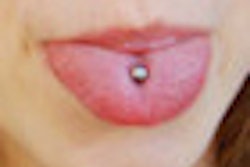
The U.S. Food and Drug Administration (FDA) has ordered three manufacturers of temporomandibular joint (TMJ) implants to conduct postmarket surveillance studies to determine the length of time before the implants are removed or replaced due to pain or other reasons.
The three manufacturers, TMJ Solutions (also known as TMJ Concepts), TMJ Medical, and Biomet Microfixation, make all of the currently approved TMJ devices marketed in the U.S. The companies will have 30 days to submit a study plan that will need to be approved by the agency before any postmarket studies can begin.
TMJ implants are sometimes used to replace the socket in the temporal bone or the rounded edge of the lower jaw that glides in the temporal bone socket because of an injury, arthritis, physical abnormality, or lost mobility, the agency noted.
TMJ implants can also be used to treat temporomandibular disorder (TMD) that has not responded to more conservative treatments such as limiting jaw movement, soft diet, jaw splint or adjustments, medicine to reduce pain, or physical therapy.
The FDA analyzed TMJ implant-related adverse event reports submitted between April 30, 2004, and August 17, 2010. The analysis described a substantial number of patients who had implants replaced within three years or less after implantation because of extreme pain. This is considerably shorter than the expected minimum five-year life span of the device, based on premarket mechanical testing.
The FDA is not recommending any changes in use of the implants. The agency may revise its recommendations or issue other recommendations after reviewing additional clinical data from the studies.
TMJ implant manufacturers were required to collect postmarket data on their implants as part of the approval process. However, the data collected did not adequately address the timing or reasons for replacement, and the studies lost contact over the years with many of the enrolled patients.
The TMJ implant postmarket surveillance studies must address the following:
- Time between initial implant and removal/replacement
- Association between patient diagnosis and the timeframe between implant and removal/replacement
- For replacement implants, the time between implant and subsequent removal/replacement
- Reasons for removal/replacement of the implant
- Associations between patient demographic and clinical data and the need or removal/replacement
- Assessment of devices that have been removed from patients



















